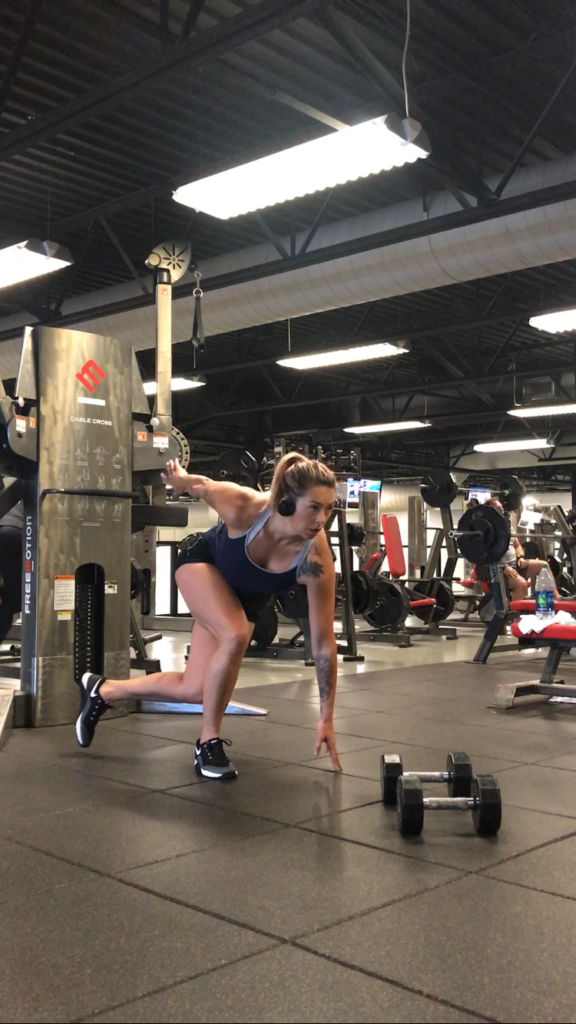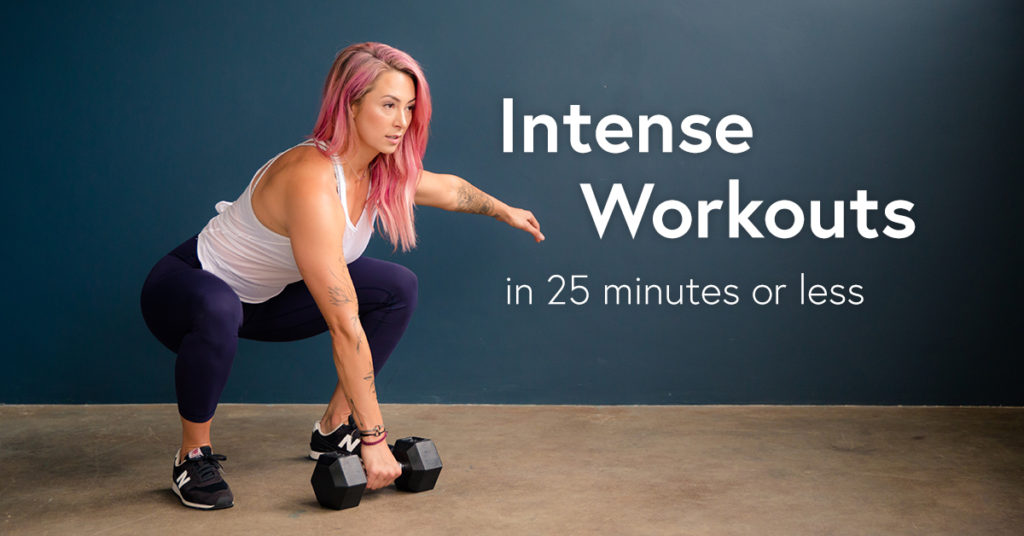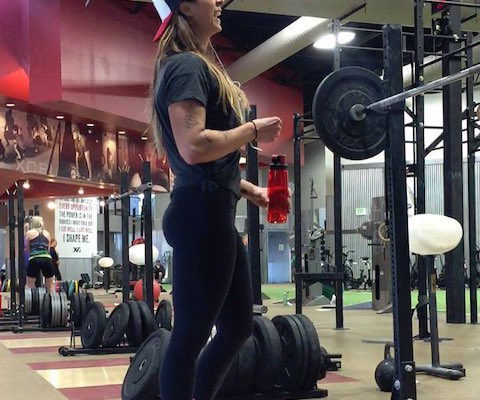Is Your Exercise Preventing Fat Loss? + Exactly How to Fix It
6am: Teach Spin
7am: Teach yoga
Lunch break at noon: Run 45 – 60 minutes
3pm: Teach Boot Camp
5:30pm: Teach Body Pump
6:30pm: Take 90-minute high-intensity cardio kickboxing class with friends
You’re looking at what used to be my schedule 4-6 days of each week for a couple of years. I was doing 5-6 hours of exercise per day. I loved every aspect of fitness; teaching it, coaching others, and participating in it. Even though I was living in the heart of Las Vegas, my idea of a good time was exercising for several hours each day.
There was just one problem: I wasn’t getting leaner or stronger, and at one point, at the height of my exercise madness, my body fat increased.
How did I gain body fat while working out so much?
It’s not complicated. I was out-eating my training, which is something that I see happen a lot with women that are exercising frequently but struggling to lose body fat.
You see, most women (and men!) struggle to control their food intake and appetite as it is, especially those that are just starting to focus on their nutrition. Layer on long, frequent exercise sessions and it’s the perfect storm for maintaining your current body composition at best, or gaining body fat at worst.
I get it – exercise is fun. If you’re anything like me, you love the feeling of your muscles burning while you’re dripping sweat. It’s hard work, and as humans we tend to believe that anything hard is going to be effective.
We believe that sweat + soreness + a hefty dose of misery = progress.
But that’s not the case for most women.
In theory, tons of exercise makes sense, right? If some is good, we think that a whole lot will surely be better. But that almost never works for any woman who isn’t very advanced in her ability to control her hunger and appetite.
When a woman is exercising more than what’s necessary, there are a few things that can happen to blunt her progress whether the goal is fat loss, or gaining control over her food.
Appetite Entitlement
“Well, I worked out earlier today, so I deserve pizza, cookies, and a few glasses of wine.”
Does this ^^^ sound familiar? Because it’s a really easy path to go down. For most people, even if they did exercise, it doesn’t justify how many calories they end up consuming because they think that they deserve it.
Exercise can be deceiving. It typically doesn’t burn as many calories as we’d like to believe it does. Additionally, most people that exercise 5-6 times per week are still considered sedentary because they are almost completely inactive during the time that they aren’t working out.
All of this isn’t to imply that you shouldn’t be fueling well for your training. You most certainly should be, especially if improving your performance and enhancing your recovery is important to you. But it is a warning to be mindful of packing in extra calories above and beyond what your body actually needs, just because you feel like you deserve it.
If you find yourself struggling with this, your best bet is very short and intense training sessions, 2-3 times per week, along with a lot of non-exercise movement. This will provide you with an opportunity to practice developing your eating skills to better control your appetite.
The Mousetrap Effect
On the flip side of Appetite Entitlement, there is something else to take into consideration that could be hindering your results.
The Mousetrap Effect: no hunger, no hunger…. then
BAM! HUNGRY HUNGRY HANGRY!
It is very common for intense training to act as a temporary appetite suppressant for many people. Lots of women to report to me that they don’t feel hunger for two or more hours after training. They don’t immediately refuel, because it feels very counterintuitive to override the lack of a hunger signal.
However, the problem here is the Mousetrap Effect, which means that you go from not-very-hungry for a couple of hours post-training to voraciously hungry later in the day. Combine that with Appetite Entitlement, and it can mean trouble in terms of being able to regulate your food intake.
This is one of the only times that I encourage my clients to override their lack of hunger signal by getting in some post-workout replenishment in the form of a small serving of protein + a small serving of starchy carbohydrate. That mini meal can be something as simple as half of a scoop of protein powder with enough water to drink it down, and a big rice cake.
If you are struggling to control your hunger and appetite later in the day after you train (or the next day, if you train in the evening), having a small post-workout snack balanced with protein and carbohydrate will work wonders.
What Training Programs Overlook
It’s common for trainers and training programs to absolutely crush their clients in hopes of helping them achieve their goal of fat loss. But what they are often overlooking is whether or not their client has developed the nutritional maturity needed to control their hunger and appetite long after the training session has ended, or on their non-training days when they don’t have the distraction of exercise. Controlling hunger and appetite – especially while training really hard – is a skill that takes work to develop and cultivate.
A trainer or program can promise fat loss all day long, but if the sessions are too frequent, too long, and too intense, chances are high that it’s going to increase hunger and appetite to the point that it’s difficult for a person to navigate.
What matters most for fat loss is the ability of the client to regulate her calories in without having to white-knuckle her way through each day due to hunger brought on by too much/long/intense exercise.
Because of this, it’s up to us coaches to be able to find the sweet spot for our clients. Providing enough intensity through training to build muscle and burn fat, but without the sessions being too long, too intense, and too frequent to be able to control intake.
In my experience in working with hundreds and hundreds of women, the sweet spot is strength training about three times per week using short and intense sessions with resistance training, and then including a whole ton of non-exercise activity, such as walking.
This allows them to get in some great work while keeping sessions intense enough to elicit a response, but not long or frequent, which is kryptonite for hunger and appetite.
It was with these specific things in mind that I created
Dumbbell Domination Training.
A six-week training program containing 18 workouts that include both conditioning work and resistance training, designed to help you lose body fat while controlling your hunger and appetite because all of the sessions are 25 minutes or less.
All you need is a pair of dumbbells.
Get Dumbbell Domination before Sept 24th!






